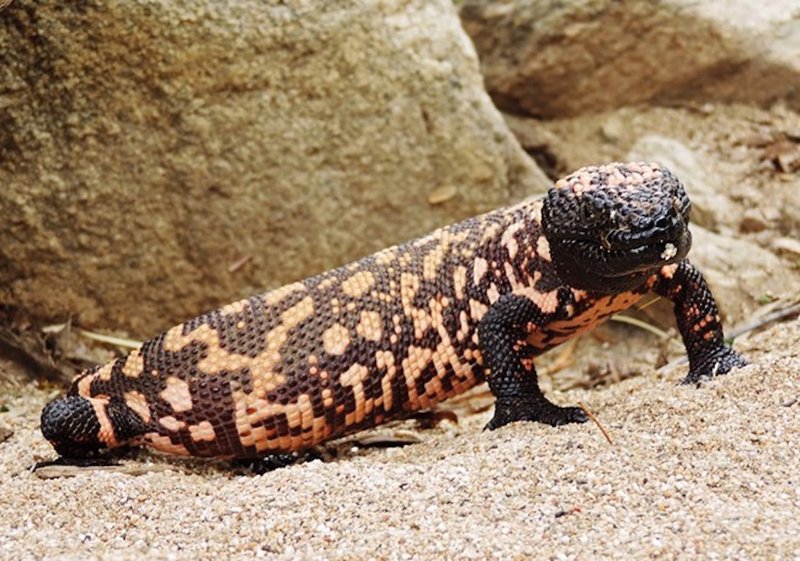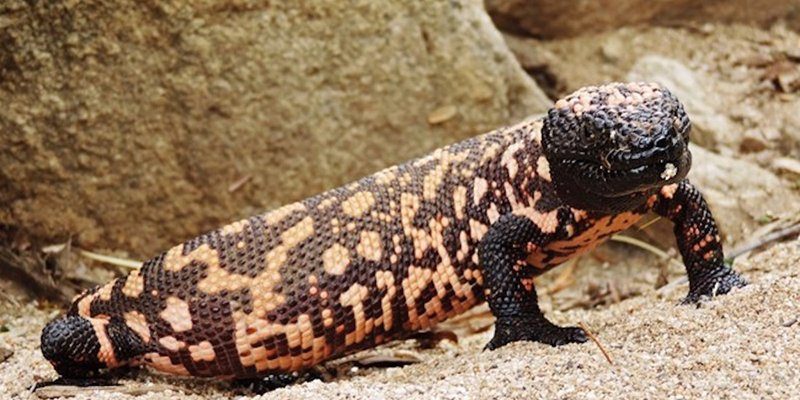
Let’s dive into the world of the Gila monster—its behaviors, habitat, and some common myths that might surprise you. Understanding this remarkable creature helps to shine a light on its role in our ecosystem and dispels some of those spooky myths. By the end, you’ll see the Gila monster in a new light—not as a monster, but as an incredible survivor in the wild.
What Exactly Is a Gila Monster?
To grasp the facts about the Gila monster, let’s start with a simple breakdown. The Gila monster (Heloderma suspectum) is one of only a few venomous lizard species in the world. They have a distinct appearance; their bodies are stout with a colorful pattern of black and orange or yellow. Think of them as nature’s living pieces of art, combining beauty with a touch of danger.
Gila monsters are primarily found in arid environments, often under bushes or in rocky areas where they can hide from predators. They are most active during the early mornings and late afternoons when temperatures are cooler, similar to how we prefer a stroll in the park during pleasant weather. This lizard isn’t just a pretty face; it plays an essential role in its ecosystem by controlling rodent populations and eating carrion, which helps keep the environment balanced.
Myth: Gila Monsters Are Highly Aggressive
You might have heard that Gila monsters are aggressive creatures just waiting to bite anyone who comes near. Here’s the thing: while they can bite if threatened, these lizards are generally quite calm and prefer to avoid confrontation. Think of them as introverts at a party—if they feel comfortable, they’ll just hang out quietly.
Gila monsters rely on their camouflage to keep safe from predators. Instead of attacking, they’d much rather blend into their surroundings. If they do bite, it’s usually a defensive move and not an outright show of aggression. Their venom is potent, but it’s more of a last resort. Most encounters with humans result in the Gila monster retreating rather than charging forward.
Fact: Gila Monsters Have Venom
Now, let’s talk about their venom. Yes, Gila monsters are indeed venomous, but that doesn’t mean they’re out to get you! Their venom is delivered through grooves in their lower jaws, and it’s used primarily for subduing prey like small mammals, birds, and eggs. So, while they can bite and inject venom, they are not a threat to humans in most cases.
Their venom is believed to serve multiple purposes—it not only helps in capturing prey but also has potential medical applications, such as aiding in diabetes treatment. Scientists are exploring the proteins in Gila monster venom, which could lead to breakthroughs in medicine. Who knew this “monster” could have such a positive impact on human health?
Myth: All Gila Monsters Are Dangerous to Humans
You might be wondering if Gila monsters really pose a significant danger to humans. The reality is that while they possess venom, they are not inherently dangerous. Yes, their bite can be painful, similar to a severe bee sting, but bites are extremely rare and usually happen only when a person tries to handle or provoke the lizard.
In fact, many people have lived in close proximity to Gila monsters without any issues at all! They tend to avoid humans and are not aggressive unless directly threatened. So, if you encounter one, it’s best to admire it from a distance and let it go about its business. After all, they’re just trying to survive like the rest of us!
Fact: Gila Monsters Are Slow Movers
If you picture a high-speed chase, the Gila monster won’t be part of that action. Gila monsters are known for their slow, deliberate movements. This might seem like a disadvantage, but their lifestyle is perfectly suited to their environment. Being deliberate and slow helps them conserve energy in the harsh desert habitat where they live.
Their hunting strategy relies on patience rather than speed. They often ambush their prey, using their excellent sense of smell to locate food, then waiting until the right moment to strike. Think of them as the tortoises of the lizard world—slow but wise in their approach to survival.
Myth: Gila Monsters Are Always Active
You might picture Gila monsters scurrying around, but these lizards are quite the nappers! They are primarily crepuscular, which means they’re most active during the cooler parts of the day—early mornings and late afternoons. During the hottest parts of the day, they retreat to their burrows or sheltered spots to avoid overheating.
This behavior helps them thrive in their harsh environment. Just like we enjoy cozying up indoors on a sweltering day, Gila monsters prefer their cool burrows. So, if you’re hoping to catch a glimpse of these reptiles, plan your visit for the early hours or just before sunset!
Fact: Gila Monsters Can Live a Long Time
One of the fascinating aspects of the Gila monster is its longevity. In the wild, these lizards can live up to 20 years or longer, making them quite the long-term residents of their desert homes. In captivity, some Gila monsters have been known to live even longer, so they can really be a lifelong commitment for those who choose to care for them.
Their long lifespan is another reason why conservation efforts are crucial. Protecting their natural habitat allows them to continue thriving and contributing to our ecosystems. It’s a reminder that every creature, no matter how small, plays a role in the bigger picture.
The Gila monster is so much more than just its name might suggest. From its slow, deliberate movements to its crucial role in the desert ecosystem, this fascinating lizard challenges many of the myths surrounding it. While it may have some venomous capabilities, it’s not the fearsome creature we often imagine. Instead, it’s a resilient survivor, quietly going about its life in the sun-soaked deserts of the southwest.
As we continue to learn more about the Gila monster, let’s appreciate its uniqueness and the role it plays in our world. By dispelling myths and understanding the facts, we can foster a greater respect for all creatures—monstrous or not! So next time you hear about the Gila monster, remember: it’s not just a scary lizard, but a remarkable piece of the natural puzzle.

